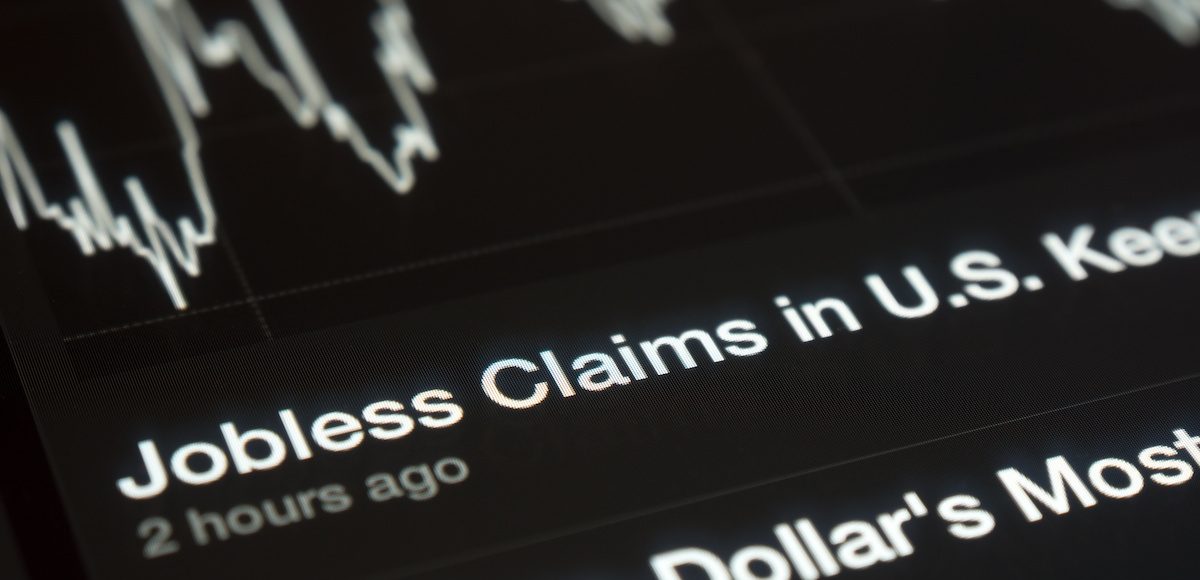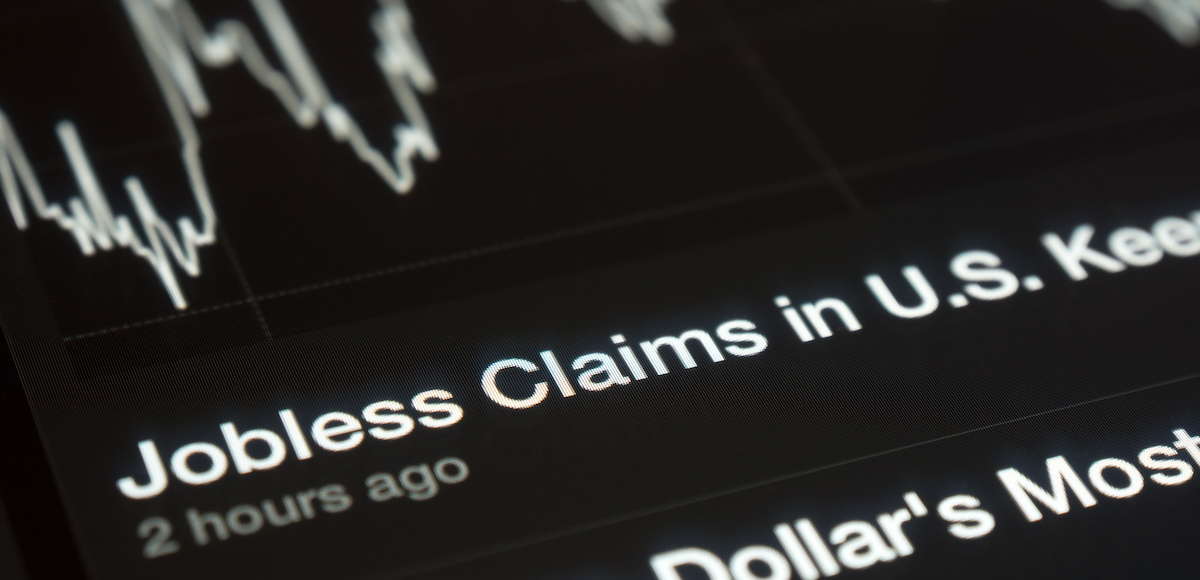

U.S. jobless claims graph on a tablet screen.
The Labor Department said jobless claims fell 1,000 to a seasonally-adjusted 222,000 for the week ending June 2, beating the median forecast. The 4-week moving average gained to 225,500, an increase of 2,750 from the previous week’s revised average.
The previous week’s average was revised up by 500 from 222,250 to 222,750.
Claims taking procedures in Puerto Rico and in the Virgin Islands have still not returned to normal and extended benefits were payable in the Virgin Islands during the week ending May 19.
Lagging claims data are very strong and indicate a continued demand for labor.
The advance seasonally adjusted insured unemployment rate was 1.2 percent for the week ending May 26, unchanged from the previous week’s unrevised rate. The advance number for seasonally adjusted insured unemployment during the week ending May 26 was 1,741,000, an increase of 21,000 from the previous week’s revised level. The previous week’s level was revised down by 6,000 from 1,726,000 to 1,720,000.
The 4-week moving average fell 13,250 to 1,728,750, the lowest level for this average since December 8, 1973 when it was 1,715,500. The previous week’s average was revised down by 1,500 from 1,743,500 to 1,742,000.
The highest insured unemployment rates in the week ending May 19 were in the Virgin Islands (3.9), Alaska (2.6), California (2.0), New Jersey (2.0), Connecticut (1.9), Puerto Rico (1.7), Pennsylvania (1.6), Illinois (1.5), Rhode Island (1.5), and Nevada (1.4).
The largest increases in initial claims for the week ending May 26 were in New York (+1,628), Missouri (+1,125), Michigan (+1,023), Illinois (+917), and Tennessee (+748), while the largest decreases were in California (-3,999), Kentucky (-3,755), Pennsylvania (-1,511), Texas (-1,117), and Alabama (-837).





